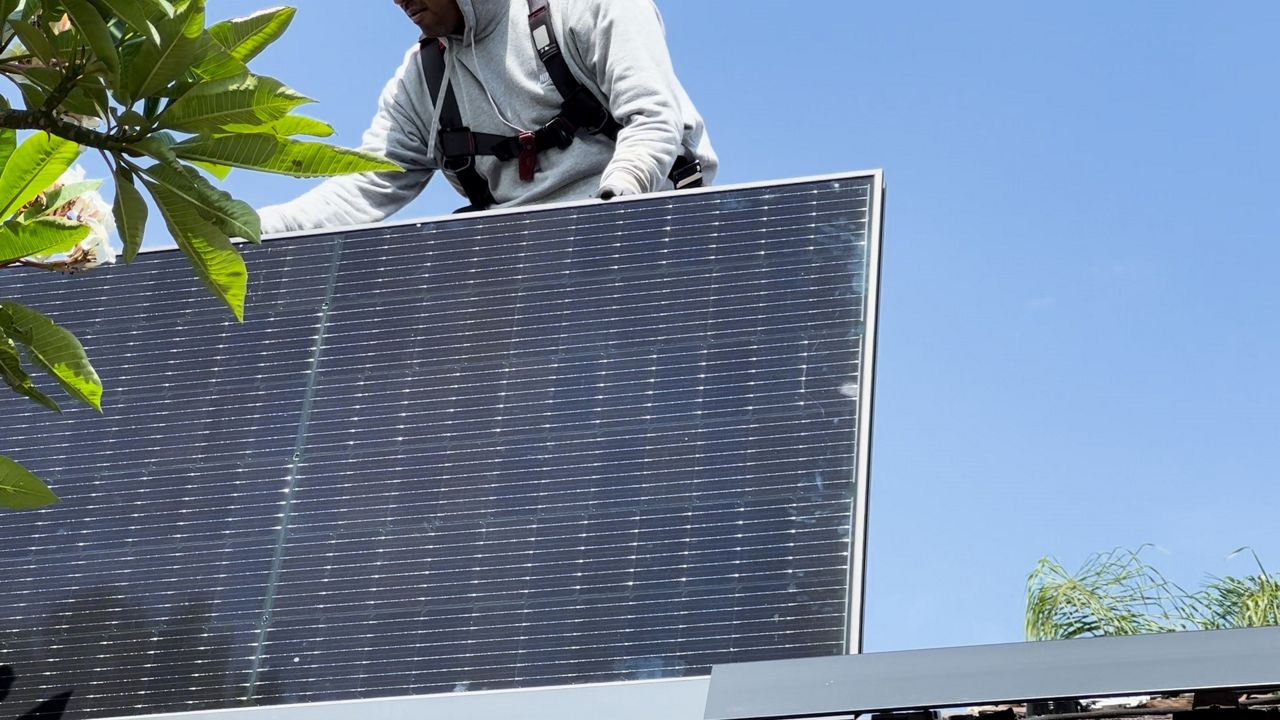PICO RIVERA, Calif. — From the front yard of his Pico Rivera home, Jose Santana watched as Tesla Energy workers installed new solar panels on his roof.
He’s hoping this will solve his fluctuating energy bills.
“We withhold using energy sometimes during the day between 4 and 9 p.m. Why? Because the rates are really high during those hours,” Santana said.
Santana said he’s seen his energy bill increase to about $250 when running his air conditioner. Now, he’s looking forward to his bill staying closer to $115 per month through the Pico Rivera Innovative Municipal Energy Power Choice program, that provides a solar panel system, installation and a home backup battery at no cost.
“Especially, when we have those days, those heatwaves that go over 100, 105, 110 [degrees] and we’re sitting there and baking inside our home. Having an A/C unit that we’re reluctant to turn on, but not anymore,” he said.
Research by Consumer Affairs found a typical residential solar panel system in California can cost up to $30,000.

A hefty cost that could benefit Pico Rivera residents. CalEPA identifies the area as one of the state’s disadvantaged communities that is challenged by environmental pollution and lower income levels.
The Power Choice program hopes to remove financial barriers by providing residents a no cost way to tap into solar savings, reduce pressure off the grid and keep backup energy on hand during the next heatwave.
Office of sustainability general manager Victor Ferrer said about 36 residents have signed up so far, but he’s hoping to see more participate.
“What the participant will be responsible for is paying $115 per month for the first battery. This includes the solar panels and the first battery. The second battery or any after that is going to be $75 more and a low energy rate of 14.5 cents rate per kilowatt hour,” Ferrer said.
Ferrer said the program is also available to renters, commercial and industrial customers. The city is also offering an electric vehicle wall charger for the first 50 residents.
It took about one year to get the proper permits in place, Santana said. But now, he’s planning on adding another way to plug in.
“This also has made it easier to consider buying an electrical vehicle in the near future, now that we are going to have this installed,” Santana said.



